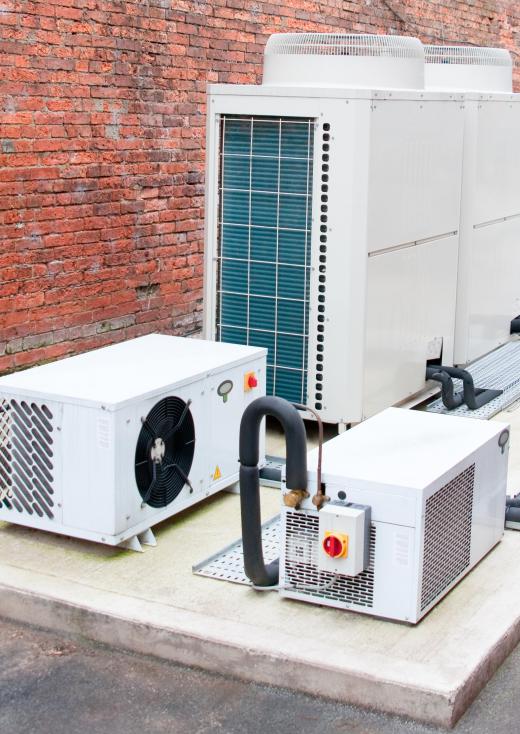A four-way valve uses a series of ports to control flow of fluids in different directions using a single valve. The design can have a single inlet port with three outlet ports, or two inlet and outlet ports to control flow from two different sources. These valves can be manually operated or powered with air, hydraulic fluid or electricity.
A single-port four-way valve contains one inlet connection for the fluid to enter the valve. Three outlet ports can be connected to discharge piping for different storage tanks, or to control pistons on hydraulically operated equipment. The valve may have a manual control arm or a powered motor or actuator to move the valve assembly. The internal valve ports open and close, sending fluid in the desired direction.

Dual-port four-way valves are used when two fluid streams need to be controlled by a single valve. The internal design may permit two fluids to move at the same time, or one fluid stream can be open and the other closed. Control of a dual-port valve can be manual or powered, in the same manner as single-port valves.
There is a wide range of possible applications for a four-way valve. Industrial controls use them to open and close other valves to feed chemical processes. They may be used to control steam flow to heat equipment or buildings. A hydraulic four-way valve might control construction equipment such as backhoes or cranes by opening, closing or moving equipment parts with hydraulic pistons.

Air conditioning systems make use of a four-way valve for heat pump applications. A heat pump extracts heat from outside, releasing it inside a building. In heating mode, the valve reverses the refrigerant flow through the indoor and outdoor coils. The discharge gas from the compressor is sent to the indoor coil and the heat is extracted to warm the interior. Switching the thermostat to cool will move the valve, and refrigerant will flow in the direction needed to cool the interior.
Swimming pools may contain four-way valves to control water flow for filtering, draining and backwashing. The pool pump discharge will normally flow through the pool filter to clean the water. Changing the four-way valve to the drain position can permit the pool level to be lowered or the pool drained. A third position on the valve will send water in a reverse direction through the filter to backwash the filter media. Four-way valves can reduce the cost and complexity of a pool system by allowing a single pump to provide multiple functions.
